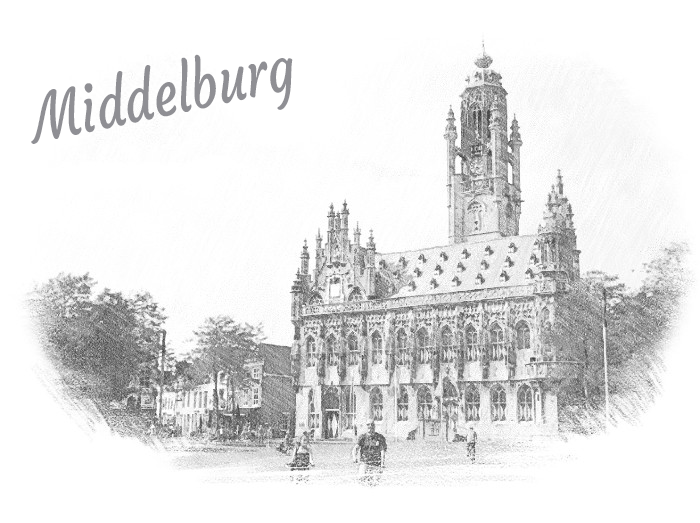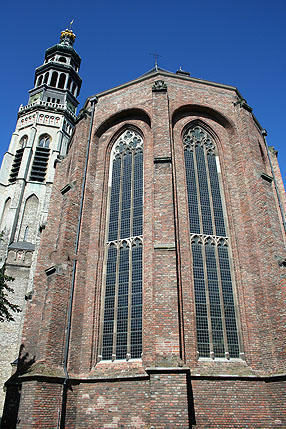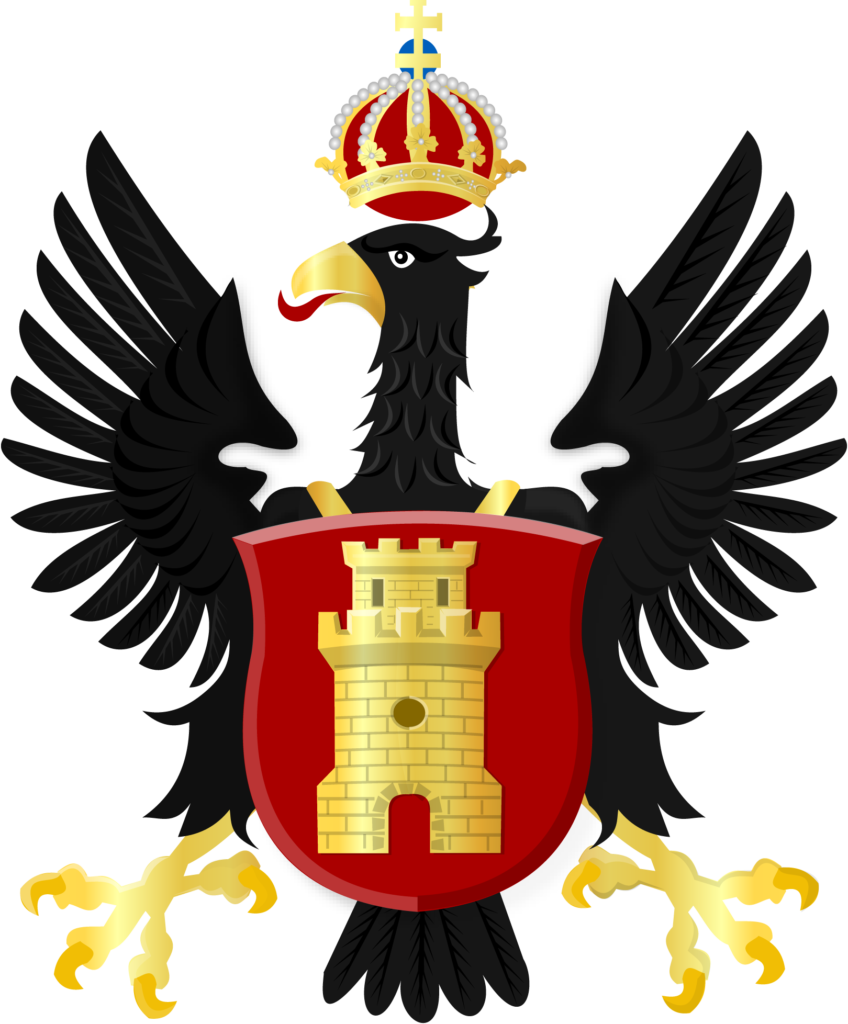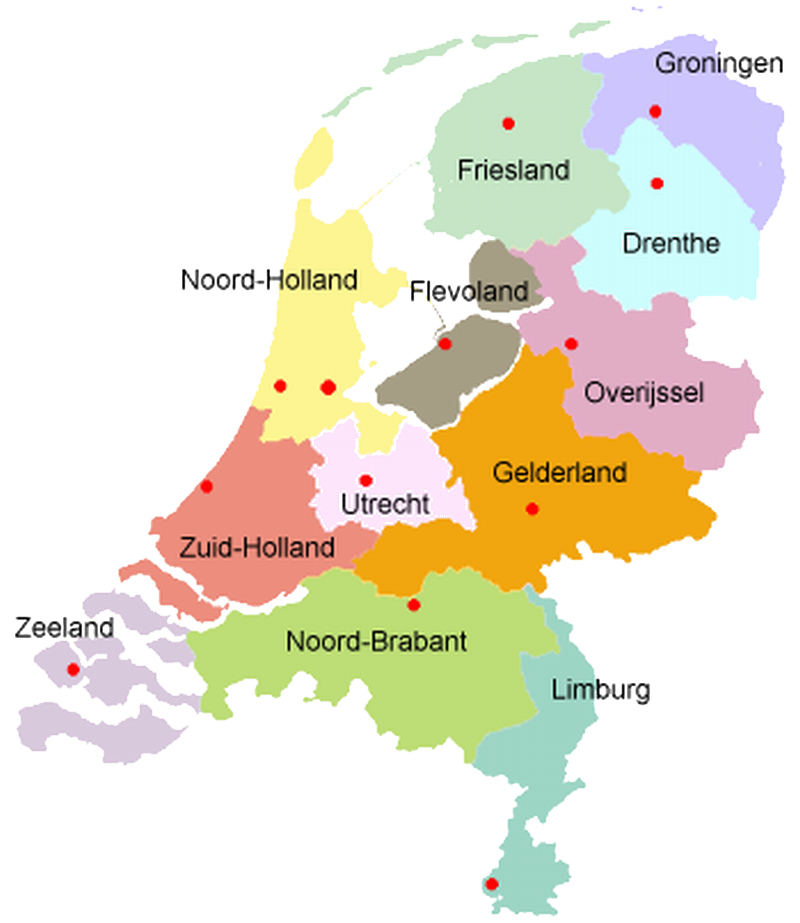
a lively atmosphere that melds the old with the new
With its charming cobblestone streets, gabled houses, and intricate canal system, Middelburg offers visitors a glimpse into the past while maintaining a vibrant present.
The town’s origins date back to the 9th century, when a settlement emerged around a medieval abbey. Over the centuries, Middelburg evolved into a bustling trading hub, playing a pivotal role in the Dutch East India Company’s activities during the Age of Exploration. Today, echoes of its maritime legacy can be felt in the quaint harbors and maritime museums that dot the area.
Middelburg’s historic center is adorned with stunning landmarks, including the imposing Gothic town hall and the soaring Lange Jan tower, providing panoramic views of the surrounding landscape. The cobbled streets are lined with shops, cafes, and art galleries, creating a lively atmosphere that melds the old with the new.
As the capital of Zeeland, Middelburg seamlessly combines its historical significance with a modern touch. Its annual festivals, such as the vibrant Mosselfeesten celebrating the local mussel harvest, attract both locals and tourists alike.
In essence, Middelburg’s allure lies in its ability to bridge the past and the present. It invites visitors to explore its historical tapestry while indulging in contemporary delights, making it a must-visit destination for those seeking an authentic Dutch experience
The NEW church (or SAint-Nicolaas-church

The Nieuwe Kerk (or Sint-Nicolaaskerk) is a church that is part of the former abbey of Middelburg in the center of the Zeeland capital Middelburg. Next to the church is the tower Lange Jan and the Koorkerk. Originally a fourteenth-century church, but a fire in 1568 (which also destroyed the roof of the Choir Church) gave it its current shape: a simple two-aisled hall church with high pointed arch windows and unadorned buttresses. The west façade consists of two gabled gables separated by an octagonal stair tower. In the nineteenth century it still had a neo-Gothic west façade, new vaults and capitals, but these were removed during the restoration of 1900. On May 17, 1940, the church was almost completely destroyed by war violence, but was then restored during reconstruction.

The city of Middelburg may date from the late 8th century or early 9th century. The first mention of Middelburg was as one of the three fortified towns (borgs) built on Walcheren to protect themselves against Viking attacks.
Middelburg received city rights in 1217. During the Middle Ages it became an important trading centre in trade between England and the emerging cities of Flanders. From 1559 to 1603 Middelburg was the episcopal seat of a Catholic diocese that encompassed all of Zeeland.
In the Eighty Years’ War, Middelburg was captured from the Spanish troops during a prolonged siege (1572–1574). The northern provinces of the original Low Countries gained their independence from their former Spanish Habsburg rulers and formed the Netherlands, a Protestant state. Later, in the 17th century (the Dutch Golden Age), Middelburg became, after Holland’s metropolis Amsterdam, the most important center for the Dutch East India Company (VOC) in the Republic of the Seven United Netherlands. As such, Middelburg also played an important role in the slave trade in the 17th century.
Middelburg city


The coat of arms of Middelburg would be a talking weapon. It stands for a castle located between two other castles, namely Domburg and Souburg. The tower from the coat of arms is reflected in the flag of Middelburg. Middelburg is one of the ten Dutch municipalities that carry the Rudolfinian imperial crown. The Rudolfinian imperial crown was one of the imperial crowns of the Holy Roman Empire, made by the Southern Dutch goldsmith Jan Vermeyen in 1602, commissioned by Emperor Rudolf II. She served as the “house crown” for the Habsburg Emperor.
The destruction of Middelburg on 17 May 1940

For the Netherlands, the Second World War begins on 10 May 1940. Five days later, the country surrenders to the Germany. Only in Zeeland is the battle continued by French troops. As a result of shelling, the historic center of Middelburg is largely engulfed in flames on May 17, 1940.
After the terrible Friday – May 17, 1940 – also called ‘Black Friday’, the balance of the bombing can be taken. Fortunately, Middelburg only had about twenty deaths.
On May 17, 1940, a large part of the old center of Middelburg went up in flames. The city was hit by artillery fire and possibly bombs. There does not seem to be any deliberate terror bombing. For a long time, the Germans were identified as the cause of the fire. But the French artillery also fired on the city.







